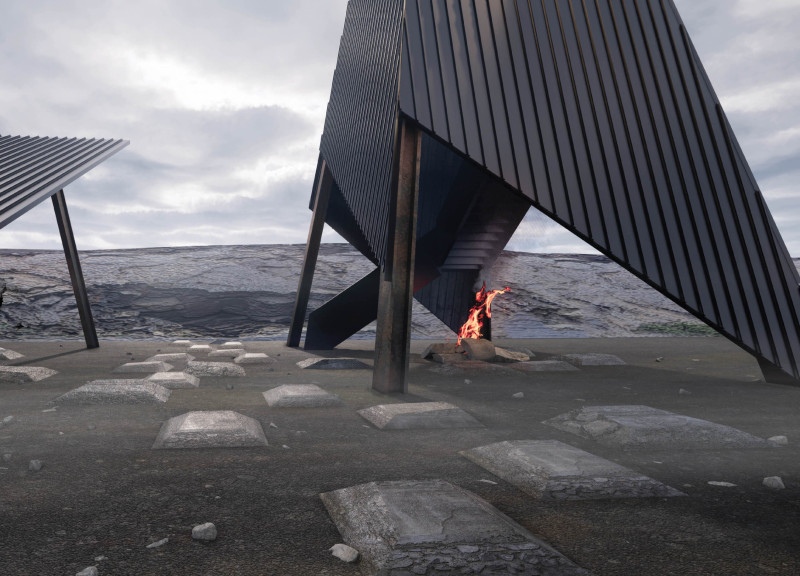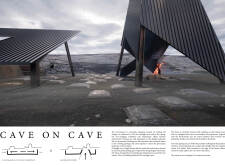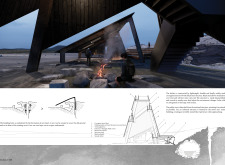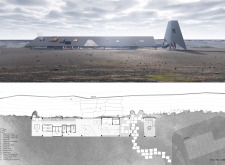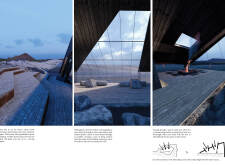5 key facts about this project
The design emerges from the landscape of the Grjótagjá caves, which are known for their hot springs and striking geological features. The setting informs a concept that focuses on adaptability and the connection between structures and their environment. A Tower serves as both an observation point and a multifunctional space, illustrating the relationship between human presence and the ever-changing natural world.
Structure and Form
At the center of the design is the Tower, a tent-like structure that combines elements of an observation tower with an elongated base. This form accommodates various functions while aligning with the North-South axis. Large windows frame views of Krafla to the North and Hverfjall to the South, allowing natural light to enter and connecting visitors with the landscape outside.
Visitor Engagement
Visitors begin their experience along modular walking paths that lead from the parking area to the entrance of the Tower. These pathways invite exploration and interaction with the surrounding nature. A timber deck extends toward the fissure, encouraging visitors to take in the geological features. Protruding cones incorporated into the design capture natural light, enhancing the spatial quality and creating an atmosphere of calm.
Material Considerations
The design uses lightweight elements, with a corrugated metal roof supported by a black steel structure. This choice of materials reflects the intention for adaptability, making it possible for the building to be relocated if necessary. Over time, the black steel will oxidize, adding a sense of texture that blends with the natural environment.
Spatial Dynamics
The Tower’s design reflects a cave-like experience through its layers, which creates unique and inviting spaces for visitors. The public cave remains separate from the main structure, ensuring that its natural conditions are preserved. This separation allows for a gentle interaction between the built environment and the geological landscape.
The design ultimately emphasizes a balance between architecture and nature. Light-filled spaces provide a connection to the surrounding area while recognizing the importance of preserving its fragile beauty.


